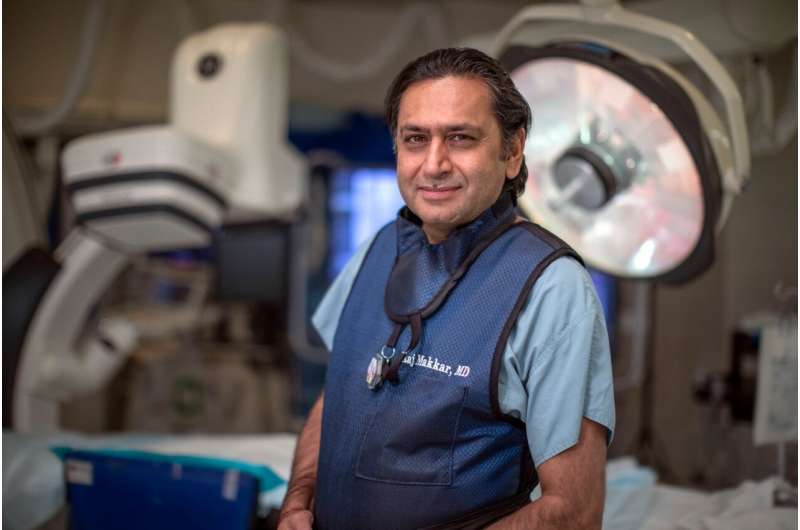This article has been reviewed according to Science X's editorial process and policies. Editors have highlighted the following attributes while ensuring the content's credibility:
fact-checked
peer-reviewed publication
trusted source
proofread
Redo transcatheter aortic valve replacement proven effective, safe

Cedars-Sinai investigators are experienced in the use of transcatheter aortic valve replacement (TAVR) with balloon-expandable valves. They now show that redo TAVR procedures are both safe and effective when compared with situations in which patients with similar risk profiles undergo the same procedure for the first time.
The novel findings, published today in The Lancet, are significant because recent randomized clinical trials have shown that TAVR is a meaningful treatment option for both younger and lower-risk surgical patients.
"We now know that redo TAVR with balloon-expandable valves may be a reasonable treatment for failed TAVR procedures in select patients," said Raj Makkar, MD, Cedars-Sinai's vice president of Cardiovascular Innovation and Intervention and the study's senior author. "This is increasingly important, as the patients treated with TAVR are younger than they were a decade ago, meaning they will likely need a repeat procedure at some point in their lifetime."
At both the 30-day post-procedure mark and at one year, Makkar's team found no difference between redo TAVR or first-time TAVR in terms of death or stroke rates.
"Our findings also suggest that redo TAVR was associated with a significant improvement in quality of life," said Makkar, who is also the associate director of the Smidt Heart Institute at Cedars-Sinai, director of the Interventional Cardiology Division in the Department of Cardiology, and the Stephen R. Corday, MD, Chair in Interventional Cardiology.
Transcatheter aortic valve replacement is a procedure that replaces a diseased aortic valve with a man-made valve. The procedure is now the standard treatment for patients with symptomatic severe aortic valve stenosis—a narrowing of the opening of the aortic valve that can cause a heart attack, heart failure, or stroke.
To generate their findings, Makkar and team utilized the Society of Thoracic Surgeons/American College of Cardiology Transcatheter Valve Therapy Registry—a national database of all consecutive patients undergoing commercial TAVR in the United States.
Among the 350,591 patients who underwent TAVR between November 2011 and December 2022, 1,320 individuals required redo procedures. The patients who underwent a repeat procedure had a mean age of 78 years old. About 58% were male and 42% female.
"Fixing damaged valves is something in which we excel at the Smidt Heart Institute," said Eduardo Marbán, MD, Ph.D., executive director of the Smidt Heart Institute and the Mark Siegel Family Foundation Distinguished Professor. "Our finding that TAVR can be redone safely is yet another step in establishing this as the default technology for aortic valve disease."
Interventionalists in the Smidt Heart Institute at Cedars-Sinai have successfully completed more than 6,000 minimally invasive transcatheter aortic valve replacements to date, with more than 650 performed in fiscal year 2022.
More information: Outcomes of repeat transcatheter aortic valve replacement with balloon-expandable valves: a registry study, The Lancet (2023). DOI: 10.1016/PIIS0140-6736(23)01636-7. www.thelancet.com/journals/lan … (23)01636-7/fulltext


















